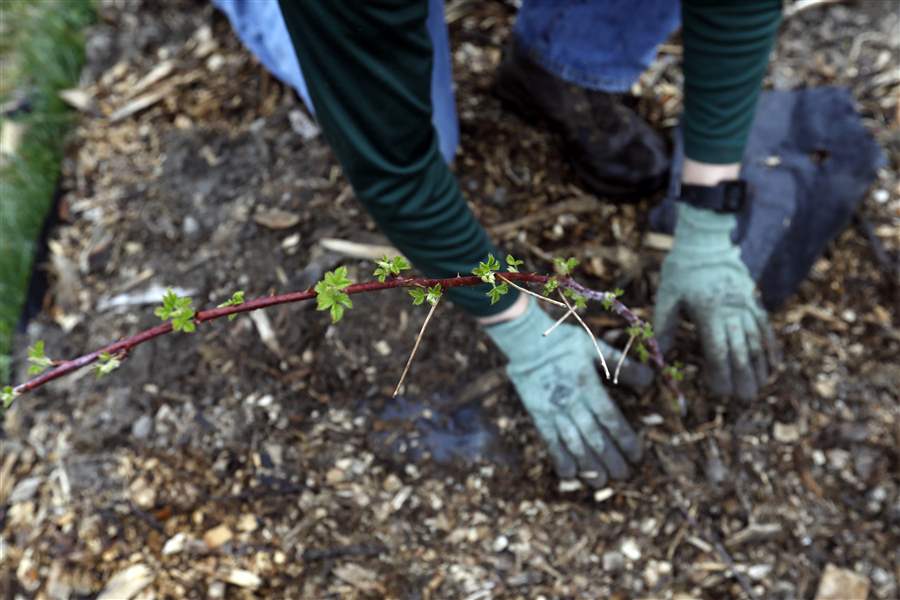
COMMENTARY
Brighten spring with early bloomers
5/2/2018
Urban farm assistant Austin Bartos transplants raspberry bushes Tuesday at Toledo GROWs.
The Blade/Katie Rausch
Buy This Image
Wondering where Mother Nature is hiding spring?

Amy Stone
Cool temperatures, chilling winds, and even occasional snow showers have gardeners itching to get outdoors and their hands back in the soil. Those who have braved the weather have enjoyed some signs of plant life in the landscape. It is those early bloomers that can keep the hopes of gardeners alive, even when temperatures fall below the freezing mark.
The bright yellow flowers of winter aconites (Eranthus hyemalis) and the white blooms of snowdrops (Galanthus nivalis) have come and gone. Missed the blooms of these two bulbs this year? No worries. Walk the garden now, looking for empty areas that could be filled with yellows and whites next winter. These bulbs prefer full sun to part shade. Both are low growers, reaching heights of less than 4 inches. They will withstand cold temperatures in February and March and can even be enjoyed popping through freshly fallen snow.
Another early bloomer that gardeners might consider is Lenten rose (Helleborus x hybridus). Its evergreen foliage is striking in shape, but it is the flowers that bring the most enjoyment. Shades of white and lavender are most common, but pink, plum, burgundy, red, and yellow flowers have been developed by breeders.
Speaking of shade, this plant prefers shade and will even tolerate drought conditions once established. This perennial began blooming about a month ago and continues its flowery show. While I enjoy the flowers on the plant, I have been experimenting with cutting blooms and pressing them for craft projects later this year.
Looking for something a little larger but still want early color? Give witch hazel (Hamamelis spp.) shrubs a try. There are four major species of witch hazels that gardeners may consider. Common witch hazel is native to the eastern United States and blooms in the fall. Vernal witch hazel usually blooms after the first of the year and is native to Missouri and Arkansas. There are also Chinese and Japanese witch hazels whose blooms follow our North American species, typically in February through April depending on the type.
There are also crosses of the two Asian species providing yet another option. There are differences in these shrubs’ flower size and color. Thin petal spider-like flowers can be yellow, orange, and red. Some are more fragrant than others, but all provide a splash of color when very few plants are blooming.
Another yellow flowering shrub that demands attention and is blooming now, is the cornelian cherry dogwood (Cornus mas). While the flowers are small in size, numerous blooms clustered together scream yellow and can be recognized from a distance.
Have I gotten you excited about early flowering plants? The forsythias (Forsythia spp.), Japanese pieris (Pieris japonica), and star magnolia (Magnolia stella) will be giving it their all. Get out in the garden to enjoy these plants. It won’t be long and we will be experiencing the dog days of summer — unless of course Mother Nature decides to hide summer too!
Amy Stone is an extension educator with the Ohio State Extension – Lucas County, Agriculture and Natural Resources. Contact her at: stone.91@osu.edu